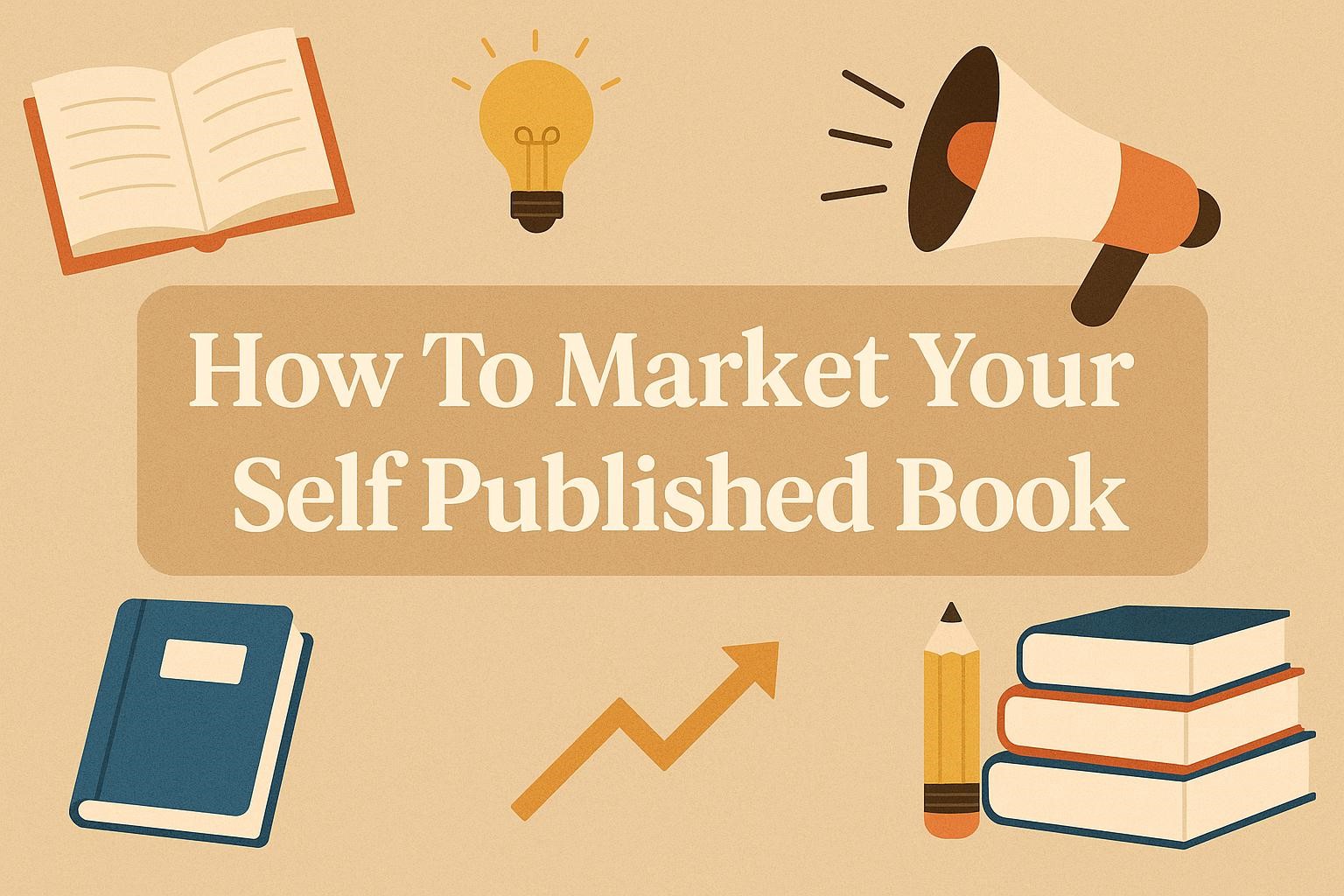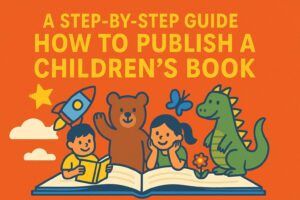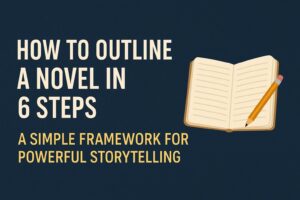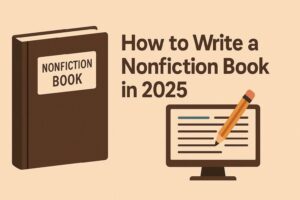Introduction: Why Marketing Matters for Self‑Published Authors
When I self-published my first book, I thought finishing it was the hard part. It wasn’t.
What blindsided me was what came after—getting people to actually find and read the thing. I had no clue how to market a self published book, and for a while, it showed.
But here’s what I’ve learned: marketing isn’t about selling out. It’s about helping your book reach the readers it was written for.
In this guide, you’ll get a clear roadmap—how to build your platform, prep for launch, get reviews, and keep momentum going long after release day.
If you’re feeling overwhelmed, that’s normal. But don’t worry—you’re not doing this alone. You’ve already written the book. Now let’s make sure people find it.
Choosing Your Foundations
Before you blast out promotions or run ads, you need clarity—on who you’re writing for, what success means to you, and where your future readers are spending their time. Otherwise, you’re just throwing darts in the dark and hoping one lands.
a) Define Your Goals & Audience
Not every self-published author wants the same thing. Some are chasing bestseller lists. Some just want to hold a physical copy of their words. Others are using their book to build credibility for a business. So start here: what does success look like for you?
- Are you looking to make a profit?
- Is your main goal exposure or building an audience?
- Do you want to establish credibility in your field?
- Are you treating this as a creative side income?
Your answers will guide everything else—from your tone on social media to the platforms you focus on. If your book is a lead magnet for your business, you’ll likely need more polish and may even hire an ebook writer to ensure the message is clear and persuasive. But if your goal is simply to share your story with the world, the focus might shift more toward community building than pure sales.
Once you’ve got that clarity, move on to identifying who your reader is.
And don’t just say “everyone.” If you try to talk to everyone, you end up connecting with no one. Think about:
- Age group
- Gender (if relevant)
- Hobbies, values, lifestyle
- What other books they read
- Where they hang out online (TikTok? Reddit? Instagram? Facebook groups?)
Once you know your ideal reader, you can start building a presence where they already are.
b) Build Your Author Platform
You don’t need to be everywhere at once, but you do need a home base and at least one channel where you actively connect with readers.
1. Create an Author Website or Blog
Start with a simple author site. Think of it as your online business card. A place where people can find your books, learn more about you, and sign up for your mailing list.
- Platforms to consider: WordPress, Wix, Squarespace
- Alternatives: Medium (for non-fiction or essays), Amazon Author Central page
Don’t overthink design—keep it clean, clear, and easy to navigate. Your book cover and bio should be front and centre.
2. Choose Your Social Media Channels
You don’t need to be on every app. Pick 1–2 platforms where your audience hangs out and where you’re comfortable showing up.
- Instagram: Great for visuals and book aesthetics
- TikTok (BookTok): Wildly effective for book marketing, especially fiction
- Facebook: Still useful for groups and older demographics
- Twitter (X): Better for building peer connections and engaging in real-time conversations
Remember: quality over quantity. Consistency matters more than volume.
3. Build Your Email List
This is one of the most powerful tools you have. Social media comes and goes, but your email list is something you control. It’s your direct line to readers.
Start collecting emails as early as possible. Use a reader magnet—something free and valuable—in exchange for signups. This could be:
- A bonus chapter
- A short story or character backstory
- An early ARC in exchange for reviews
Use simple tools like MailerLite, ConvertKit, or Substack to manage your list.
4. Consider Affordable Support
If the tech, writing, or strategy side of this feels overwhelming, don’t be afraid to outsource. Hiring help doesn’t mean selling out—it means working smart.
Whether it’s graphic design, email setup, or social media planning, there are plenty of affordable book marketing services out there that cater specifically to indie authors. You don’t have to do it all yourself.
Pre‑Launch Prep
Publishing a book without a plan is like throwing a party and forgetting to send the invites. The pre-launch phase is your window to warm up the engine—build curiosity, set expectations, and get everything polished for the big day. It’s not just about hype. It’s about making sure you’re ready when people actually start looking you up.
a) Nail Your Metadata & Blurb
1. Optimize Your Metadata
Metadata is just a fancy word for the details that help your book get discovered—especially on Amazon. That means choosing the right keywords for your:
- Title and subtitle
- Book description
- Backend keywords (on publishing platforms)
- Categories and genres
Be strategic. If you’re writing a cosy fantasy, don’t just list “fantasy.” Go deeper. Use keyword tools or Amazon’s own search bar to figure out what readers are actually typing in.
This is one of the core pieces of how to market a self-published book effectively. You can’t control who clicks, but you can make sure your book shows up when someone is searching for the kind of story you’ve written.
2. Write a Compelling Blurb
Your blurb is not a synopsis. It’s a hook. It’s your one shot to convince a browser to hit “buy.” So lead with tension. Focus on character stakes. Leave them wanting more.
Bonus tip: write two blurbs—a short version (2–3 sentences for social media and quick promos), and a longer version for your Amazon page.
b) Prepare Promotional Materials
1. Book Assets You Can Reuse
Marketing gets a lot easier when you’ve got a small toolbox of ready-made assets. You don’t need a massive budget or a design degree, just a few versatile pieces:
- Shareable excerpts or sample chapters
- Author bio (short and long versions)
- One-sentence pitch (great for interviews or social posts)
- Press release template
- Author Q&A or interview sheet
You’ll use these again and again—for podcasts, blogs, newsletters, and social captions.
2. Visual Materials & Creative Extras
This is where you get to have a bit of fun. Even a simple Canva account can go a long way in creating:
- Book trailers or teaser videos
- Quote graphics or countdown posts
- Bookmarks or posters (especially useful for events)
- QR codes that link to your website, sample chapters, or pre-order page
And if you’re wondering how to market a self published book online, it starts with these building blocks. Every piece of content you share—from a trailer to a simple quote card—should give people a reason to click, explore, or share your book.
Launch Strategy
You’ve done the groundwork. Now it’s time to launch—but not just press “publish” and hope for the best. A strong launch isn’t about luck. It’s about timing, visibility, and momentum. You only get one first impression with readers—make it count.
a) Launch Planning
1. Build Buzz Before Release
You don’t want silence on release day. You want people already waiting. That starts weeks before your book goes live.
Here’s how to build buzz:
- Set up pre-orders on Amazon or other platforms
- Share a countdown with teaser content: cover reveal, character intros, quote graphics
- Announce the release date through your email list and socials
- Host a virtual event—a casual live Q&A, a giveaway, or even a reading
Even if your following is small, momentum multiplies. One person talking about your book can lead to three more discovering it.
2. Launch with Early Reviews
Start sending Advance Review Copies (ARCs) before launch. Aim for niche bloggers, influencers, BookTok creators, or bookstagrammers who are already talking to your ideal audience.
Not sure where to start? Search hashtags related to your genre on Instagram or TikTok, then DM creators politely with a brief pitch and a link to your ARC.
These early reviews will give your book credibility when it matters most—on day one.
b) Paid Advertising
If you’ve got a bit of budget, targeted ads can seriously amplify your reach. But here’s the key: test small, scale smart.
1. Where to Advertise
- Facebook and Instagram Ads: Great for targeting specific demographics and interests
- Amazon Ads (AMS): Perfect if you’re figuring out how to market a self published book on Amazon—you’re meeting readers right where they’re browsing
- Google Ads: Best if you’ve got a strong landing page or email signup funnel
- Pinterest Ads: Surprisingly effective for romance, fantasy, and lifestyle non-fiction
2. A/B Testing Is Your Best Friend
Start with two versions of your ad—different images, headlines, or calls to action. Let them run with a small daily budget. See which performs better, then invest more in the winner. Don’t expect overnight results. It can take a few weeks to find the right audience and messaging. But when it works, it really works.
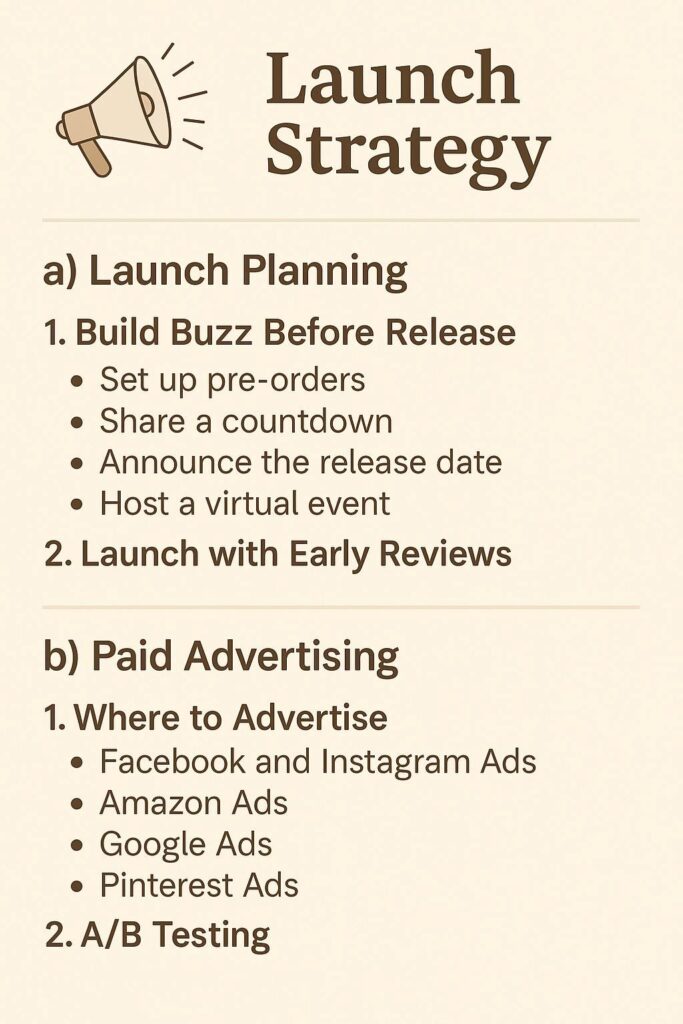
When people ask how to market a self published book, they often jump straight to ads or giveaways. And yes, those things help—but only if you’ve laid the foundation first.
Your launch isn’t a single moment. It’s a series of small actions that build excitement and trust. Be visible. Be consistent. And most of all, be human.
Post‑Launch Momentum
You hit publish. You celebrated. And maybe now you’re wondering… what’s next?
Here’s the truth: launch day is just the beginning. If you want your book to have legs—if you want it to keep reaching new readers—you need to keep showing up. Momentum doesn’t sustain itself. But with a few simple strategies, you can absolutely keep your book alive and kicking long after the confetti settles.
a) Reviews & Word‑of‑Mouth
Nothing sells books like word of mouth. Seriously—reviews are gold. Whether it’s on Amazon, Goodreads, or a random blog, reader reviews build trust and help new readers take a chance on your story.
But most readers won’t leave a review unless you ask.
Here’s how to gently nudge them:
- Add a polite “thank you” + review request in the back of your book
- Mention it casually in your email newsletter
- Offer a free bonus (like an extra short story or art print) in exchange for an honest review
- Host a giveaway where entering = posting a review
Also, don’t underestimate free or discounted promos. Temporarily lowering your book’s price can help push it into Amazon’s “also bought” or “bestseller” lists—leading to more organic visibility. You can even stack it with a promo newsletter service (like BookBub or Freebooksy) to reach more readers during the discount window.
b) Content Marketing That Adds Value
Your book is more than a product. It’s a conversation starter.
So ask yourself: what’s the heart of your story? What themes or topics could spark more content?
Start creating blog posts, videos, or podcast interviews tied to those ideas. If you wrote a dark fantasy with morally grey heroes, maybe you write a blog post titled “Why Villains Are Sometimes Right.” If your book covers grief, you might record a video on “What No One Tells You About Losing Someone.”
The goal here is to connect your book to broader conversations—things people are already thinking about. That’s where the power of content marketing shines.
You can also appear as a guest on blogs, podcasts, YouTube channels, or TikTok lives. These collaborations often cost nothing and can expose your book to a whole new audience. This is the long game, but it builds genuine connection—far more powerful than shouting “buy now!” into the void.
c) Collaborations & Community
You don’t need to go it alone. In fact, you’ll go further with others.
Team up with other indie authors in your genre. Bundle your books into themed deals. Cross-promote each other’s launches. Start a group email list or mini anthology.
You can also work with:
- Book clubs (offer to join for a live Q&A)
- Subscription boxes (especially for niche genres)
- Affiliate programs or influencers who align with your book’s message
And if you’re juggling too many hats, this is where affordable book marketing services can really help. Whether it’s running your ads, designing promo graphics, or helping pitch to influencers, these services can give you breathing room without breaking your budget.
d) Offline & Interactive Engagement
Don’t forget the power of real-world connections.
You can:
- Host or join virtual book tours
- Run reader artwork or fanfic contests
- Attend pop-up readings at local bookstores or libraries
- Offer a free workshop tied to your book’s theme
- Use fun merchandise like postcards, stickers, or bookmarks to keep your book top of mind
These little moments—when readers feel like they’re part of your world—create loyalty. And loyal readers are the ones who recommend your book again and again.
Keep the Fire Burning
When people ask how to market a self published book, they often focus on launch day. But the truth? Longevity matters more. Post-launch success is about staying visible, building community, and delivering value again and again. You don’t have to shout. You just have to show up, consistently and authentically.
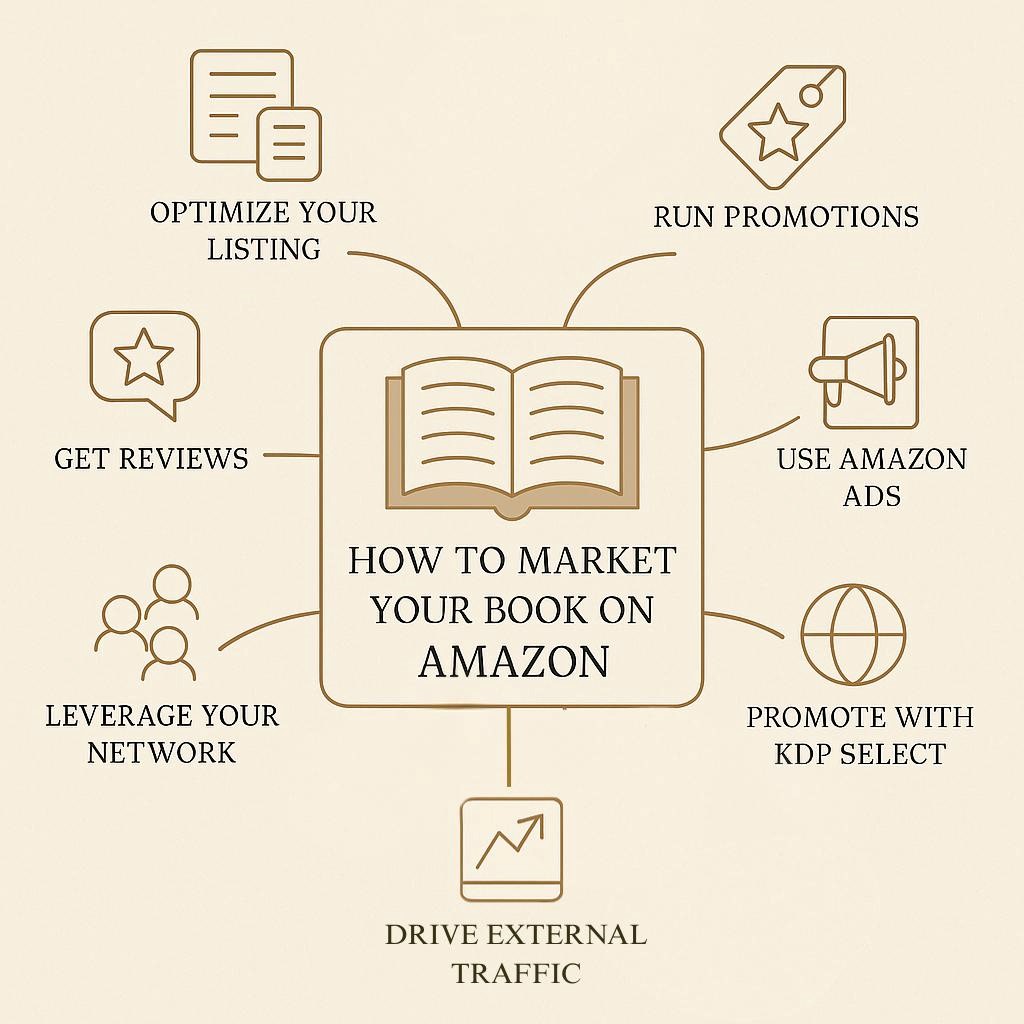
Scaling & Reinforcing Success
You’ve launched. You’ve built momentum. Now the question becomes: how do you grow this into something bigger?
This stage is where many self-published authors plateau—or worse, vanish. But with the right steps, you can take your book (and your author career) from a one-time win to a sustainable, long-term success.
a) Write the Next Book
The single best marketing strategy for any self-published author? Write another book.
Readers love series. They love consistency. And if someone enjoyed your first book, they’re more likely to buy the second—and recommend the series to others. It’s not just about doubling your income. It’s about creating a universe readers want to stay in.
You don’t need to commit to a never-ending saga, either. Even a duology or trilogy can turn your audience into loyal fans.
And if the idea of pumping out another book feels exhausting, you might consider this: some authors choose to hire ebook writers or developmental editors to help with outlining, ghostwriting, or just staying on track. If you’ve got a strong vision but not enough time, there’s no shame in asking for help. Publishing is a business—you’re allowed to treat it like one.
b) Offer Bundles and Box Sets
Bundling your books (digitally or physically) is a smart way to increase perceived value and encourage binge-reading.
If you’ve got a series, try a 3-book box set at a slightly discounted rate. You’ll often earn more per reader than with single-book sales. Plus, box sets do well in Amazon rankings, especially in Kindle Unlimited.
You can also bundle your book with related content—a workbook, companion guide, short story collection, or even another author’s book as part of a special promotion.
c) Create Courses or Educational Spin‑Offs
This works especially well for non-fiction authors, but some fiction writers have done it too.
Ask yourself: Can this book be repurposed into something teachable?
- Could you turn your worldbuilding process into a course for other writers?
- Could you expand your book’s theme into a video series, workshop, or coaching offer?
- Could your self-help book become a 30-day challenge or email course?
This not only builds your authority—it diversifies your income. Readers who love your book may be eager to go deeper with you.
d) Keep Your Readers Coming Back
Now that you’ve got readers, how do you keep them?
Use loyalty programmes, email exclusives, or seasonal promotions to stay in touch. Give your subscribers early access to new releases, free short stories, or behind-the-scenes extras.
If someone has already bought from you, it’s much easier to get them to buy again—especially if they feel like they’re part of something special.
And remember: scaling doesn’t always mean going bigger. Sometimes it means going deeper—building a tighter, more engaged audience who stick around for the long haul.
Growth Is a Loop, Not a Ladder
The truth about how to market a self published book is that it never really stops. But the good news? You get smarter. You get faster. And your reader base grows stronger with each new thing you create.
Reinvest what you’ve learned. Refine your message. And most of all—keep going.
Tips for Long‑Term Growth
After your book launch, it’s easy to feel unsure about what comes next. The initial push is over, early reviews are in, and now the challenge shifts: How do you sustain interest and keep growing as an author?
This is where many self-published writers either stall—or find their stride.
Long-term success doesn’t come from one big moment. It’s built through consistency, adaptability, and maintaining strong relationships with your readers. It’s also about staying visible without being overwhelming, and promoting your work without losing your voice.
Whether you’re just beginning to understand how to market a self published book online or you’re ready to refine an existing strategy, this phase is about playing the long game.
Here’s how to build a foundation that supports both your current book—and your next one.
a) Show Up Consistently
Consistency doesn’t mean posting every day. It means being reliable.
- Send a monthly newsletter, even if it’s just a short update
- Show up on your chosen social media platforms once or twice a week
- Keep your website up to date with fresh content, even if it’s simple
Readers don’t expect you to be everywhere all the time—they just want to know you’re still there.
Writing, publishing, and promoting a book isn’t a one-time event. It’s a rhythm. And the more consistent you are, the more trust you build over time.
b) Pay Attention to Feedback (But Not All of It)
Your readers are telling you things all the time—through reviews, emails, DMs, or even silence.
Some feedback will be valuable. Others? Not so much.
The key is to notice patterns. If several reviewers mention your pacing is slow in the first third, consider tightening it in your next book. If people love a particular character, maybe give them a spinoff novella.
But don’t lose your voice trying to please everyone. Listen. Learn. But stay true to the reason you started writing in the first place.
c) Focus on Real Connections
One of the biggest traps authors fall into is sounding like a billboard.
“Buy my book!”
“New release—available now!”
“On sale for 99p!”
Yes, you need to promote. But shouting about your book on repeat doesn’t build loyalty—it builds distance.
Instead, focus on conversations. Share your writing journey. Ask your readers questions. Talk about the books you’re loving or the characters you’re struggling with. Be human, not just a seller.
This is the real answer to how to market a self published book online: build a brand that’s rooted in genuine connection, not just clever campaigns.
d) Keep Learning, Keep Adapting
Algorithms change. Platforms rise and fall. What worked two years ago might not work today. And that’s okay.
The authors who succeed over time are the ones who stay curious. Read about what’s working for other indies. Experiment with new tools or platforms. Try a podcast interview or learn the basics of Amazon Ads. You don’t need to do everything. But you do need to stay open.
Because here’s the thing: no one has this completely figured out. Not even the six-figure authors. They’re just learning, trying, testing—over and over.
Growth won’t always look like climbing a chart. Sometimes it’s a DM from a reader who says your book got them through a hard week. Sometimes it’s selling five copies after a blog post you nearly didn’t write.
Whatever it looks like—keep going.
FAQs
Q: When should I start marketing my book?
A: As early as possible. Ideally, you should begin building your platform and email list weeks—or even months—before release. Marketing doesn’t start on launch day. Building pre-launch momentum can make a huge difference in your visibility and sales during those crucial first weeks.
Q: Should I use paid ads or focus only on organic growth?
A: A blended approach is usually the most effective. Organic strategies—like email newsletters, social media engagement, and content marketing—help you build trust and long-term relationships. Paid ads can amplify your reach and bring in cold audiences. Start small with ads, test what works, then scale.
Q: How do I get more reviews?
A: Early reviews are essential for credibility. You can encourage them by:
Offering free or discounted copies to bloggers and early readers
Including a polite review request at the end of your book
Reaching out to niche reviewers who focus on your genre
Don’t be afraid to follow up with readers who joined your ARC team—many simply forget without a reminder.
Q: Can BookTok really help?
A: Yes—especially for romance, fantasy, thrillers, and young adult genres. Viral videos in the BookTok community have driven indie titles to bestseller lists. You don’t need to go viral, but engaging with BookTok trends and creators in your niche can give you a major visibility boost.
Q: What if I don’t have a big budget?
A: There are plenty of free or low-cost marketing tactics that still get results. Focus on:
Starting a blog tied to your book’s themes
Building a simple author website
Growing your email list with a free reader magnet
Joining Facebook groups or online book communities
Partnering with other indie authors for joint promotions
When used strategically, small actions add up—especially over time.
Q: How do I market my book on Amazon specifically?
A: Knowing how to market a self published book on Amazon is key, because it’s where most sales will happen. Here’s where to focus:
Optimize your metadata (title, subtitle, keywords, categories)
Write a compelling, emotionally engaging book description
Use Amazon Ads to reach your target readers
Encourage early reviews to boost credibility and improve rankings
Enroll in Kindle Unlimited (if it makes sense for your genre)
Amazon rewards books that convert well—so the more appealing and relevant your listing is, the better your chances of long-term visibility.
Conclusion
Marketing your own book can feel like shouting into a void. One minute you’re excited, the next you’re wondering if you’re just annoying people on the internet. You didn’t sign up for this part. You signed up to write.
But here’s what I’ve learned: if you want your story to matter to more than just you… you have to fight for it.
Figuring out how to market a self published book isn’t about being loud. It’s about being present. It’s about showing up with intention—over and over again—until the right readers find you.
Some days that means creating a reel no one watches. Other days it means waking up to a review from a stranger who gets what you were trying to say. That’s what you’re working toward. Not algorithms. Not trends. Real connection.
So no—this isn’t easy. But if you’ve made it this far, you already know how to do hard things.
Keep going.

